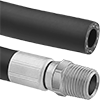Filter by
Material
Fastener Strength Grade/Class
Finish
Thread Pitch
Thread Spacing
Drive Style
Specifications Met
Thread Direction
Tensile Strength
Screw Features
DFARS Specialty Metals
Fastening and Joining
Material Handling
Power Transmission
Fluid Handling


































